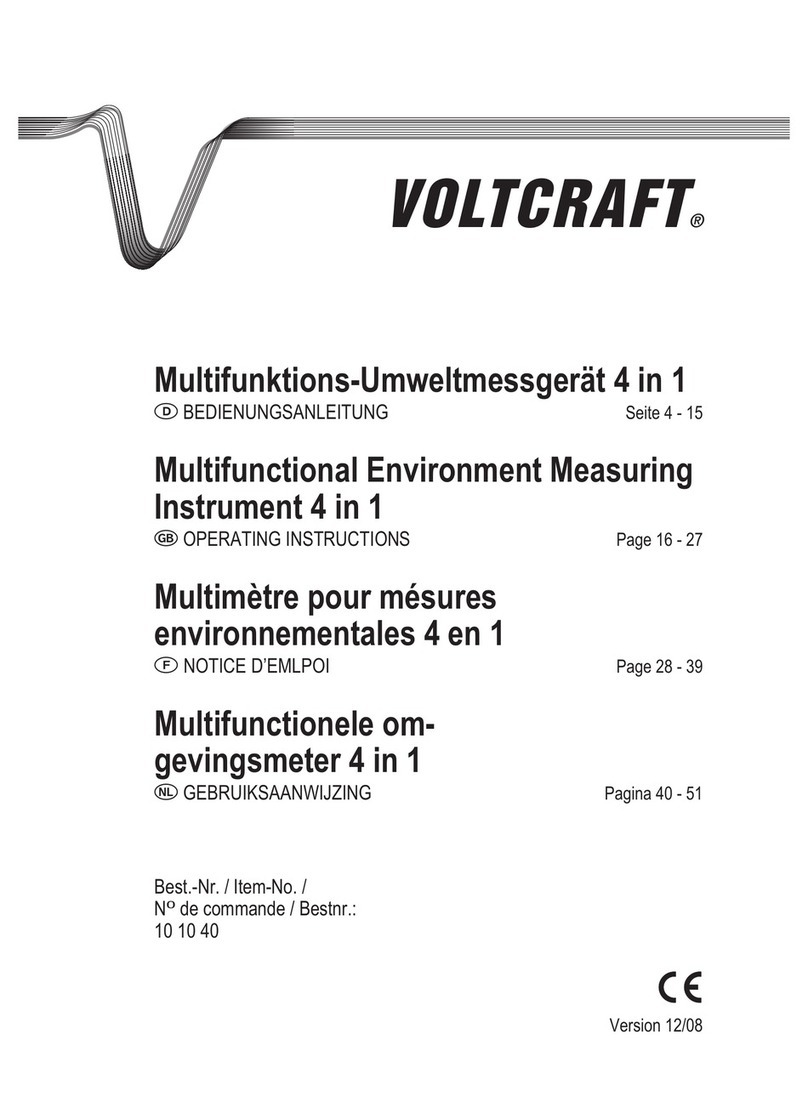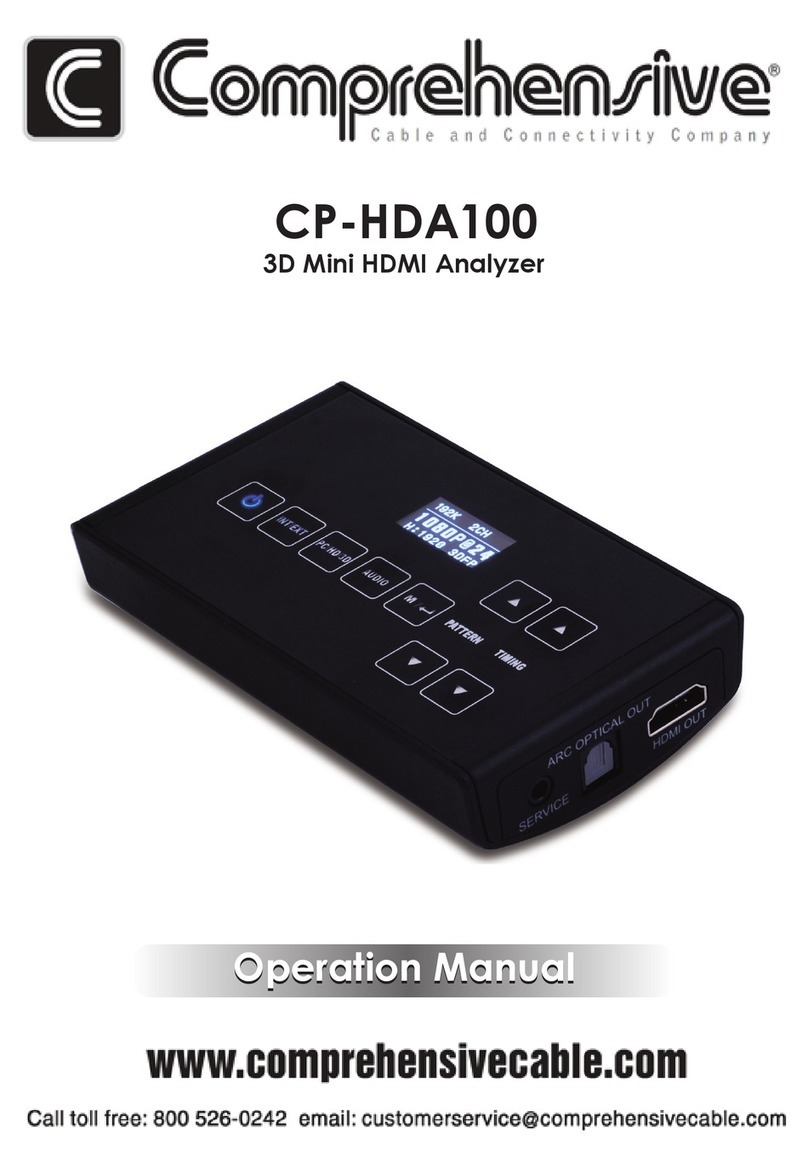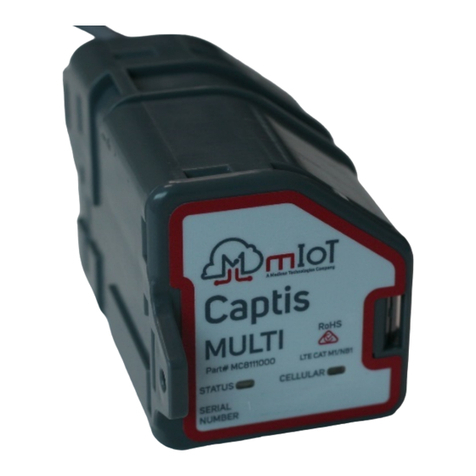Spectral Instruments Series 800 User manual

Series 800 Camera System User's Manual
P/N 2500
2002
Spectral Instruments, Inc.
TUCSON, ARIZONA

Spectral Instruments
Pt # 2500- 2

Spectral Instruments
Pt # 2500- 3
TABLE OF CONTENTS
1INTRODUCTION 7
1.1 S800 Series Camera System Overview 7
1.1.1 SICCD - The Important Distinction 8
1.1.2 CCDs And How They Work 8
1.1.3 Cooling The CCD - Why 10
1.1.4 Sensitivity Of The Camera 10
1.2 The S800 Camera 10
1.2.1 The Camera Head And Electronics 12
1.2.2 The Camera Power Supply 14
1.2.3 Camera Interface Module 14
1.2.4 Hooking Up Your Camera To Your Equipment 14
1.2.5 TDI Operation 15
1.2.6 Shutters And Timing Considerations 15
1.2.7 Lenses, Light Paths and Vignetting 16
1.3 The S800 Power Supply 16
1.3.1 Power Requirements 16
1.3.2 Power-On Startup Sequence 16
1.3.3 Externally Supplied Power 17
1.4 The S800 Camera Cable Set 17
1.4.1 Camera To Computer 17
1.4.2 Shutter Connector 17
1.4.3 The Auxiliary Port 18
1.5 The Cooling System 18
1.5.1 System Description 18
1.5.2 Hooking Up A Cooler 18
1.5.3 Cooling Cycle 19
2. RECEIVING YOUR S800 CAMERA SYSTEM 21
2.1 Shipping Configuration 21
2.1.1 Incoming Inspection Of Cartons 21
2.1.2 Opening The Cartons 21
2.2 Environment Requirements For S800 Cameras 21
2.2.1 Temperature - Humidity - Pressure 21
2.2.2 Electrical Requirements 21
2.2.3 Other Requirements 21
2.3 Assembly Of The Camera System 22
2.3.1 Assembly Of The Camera 22
2.3.2 Assembly Of The Camera Power Supply 22
2.3.3 Digital Camera Interface 23
2.3.4 Software Installation 24
2.3.5 Software Operation 24
2.4 Startup 24
2.4.1 Power-On Condition And Indicators 24

Spectral Instruments
Pt # 2500- 4
2.5 Commanding The Camera 25
2.6 Initial Tests 25
2.6.1 Types Of Images 26
2.6.2 Default Camera Readout Format 26
2.6.3 Dark Image 28
3. RUNNING THE COOLED CAMERA 31
3.1 Image Quality 31
3.2 Performance Metrics 31
3.2.1 Noise 31
3.2.2 Dark Signal Generation Rate 32
3.3 Other Metrics 32
4. USING THE CAMERA 33
4.1 Kinds Of Images 33
4.1.1 Bias Images 33
4.1.2 Dark Images 33
4.1.3 Light Images 34
4.2 Fixing Problems With Images - The Master Image Solution 35
4.2.1 Master Bias Images 35
4.2.2 Master Dark Images 35
4.2.3 Master Flat Images 36
4.3 Correcting Images 37
4.3.1 Why Correct At All? 37
4.3.2 How 38
4.3.3 Limitations On The Flat Field Process 38
4.3.4 Understanding The Scaling Effects 39
5. CAMERA SYSTEM WARRANTY AND SERVICE 41
5.1 The Warranty Conditions 41
5.2 Returning A Camera For Service 41
5.3 Diagnosing A Camera Problem 41
5.3.1 No Response 41
5.3.2 Fuses 41
5.4 Determining When To Refresh The Vacuum 42
5.4.1 Measuring The Camera Head Pressure 42
5.4.2 Why Pump 42
5.5 Refreshing The Camera Vacuum 42
5.5.1 Equipment Required 43
5.5.2 The Refresh Process 45
5.6 Cleaning The Window 46

Spectral Instruments
Pt # 2500- 5
5.6.1 Equipment Required 46
5.6.2 The Process 47
6. FIELD REPLACEABLE COMPONENTS 49
6.1 Cables 49
6.1.1 Camera Cables 49
6.1.2 Camera To PDCI Cable 49
6.2 The PDCI Card 49
6.3 The Camera 49
7. SYSTEM OPERATION AND SAFETY 51
7.1 Electrical Requirements 51
7.1.1 Incoming Power 51
7.1.2 Power Cords 51
7.1.3 Power Required 51
7.2 Physical Operating Conditions 51
7.2.1 Temperature 51
7.2.2 Humidity 51
7.2.3 Altitude 51
7.2.4 Vibration 51
7.2.5 Aggressive Vapors 52
7.3 Warnings 52
7.3.1 Electrical System 52
7.3.2 Camera Head 52
7.3.3 Opening The System 52
7.3.4 Refreshing The Vacuum 52
7.3.5 The Camera Window 52
8. TROUBLESHOOTING 53
8.0 Power Problems 53
8.0.1 Main Power Failure 53
8.0.2 DC Voltage Failure 53
8.1 Image Quality Issues 53
8.1.1 No Image 53
8.1.2 Streaks In The Image 54
8.1.3 Noisy Image 55
8.2 The Camera Seems Not To Be Stable 56
8.3 Camera Reports The Proper Temperature But Dark Is High 56
8.4 Camera Does Not Cool 57
8.5 Condensation On The Camera Window 57

Spectral Instruments
Pt # 2500- 6
APPENDIX A 58
CCD Readout Format 58
APPENDIX B 61
Multi-Port CCD Readout Parameters 61
Multi-Port CCD Image Pixel Data Format 61
Single-Port CCD Image Orientation 61
Over-Scan in Multi-Port CCD Readout 62
APPENDIX C 65
Sensitivity And Attenuation 65
Dual Slope Integrator Sensitivity 65
APPENDIX D 67
APPENDIX E 68
External Trigger 68
APPENDIX F 70
S800 DC Power Specification 70

1 Introduction
This manual documents the standard Series 800 (S800) camera. Features that pertain
to a specific version of a camera are described in detail in Appendix G. It is
recommended that you read that section before operating your camera.
The S800 is a multi-port (from one to four ports) 14- or 16-bit camera where the
CCD can be cooled to temperatures in the range of –40oC using a thermoelectric
cooler. This camera system can read out at up to 1,000,000 pixels per second from
each port for multi-port CCDs. It reads out at up to 4,000,000 pixels per second as a
single port camera. It offers high precision, high stability and relatively short
readout times.
Figure 1.
1.1 S800 Series Camera System Overview
A typical form of the S800 camera is shown in Figure 1. It consists of an evacuated
and sealed camera head chamber with the CCD inside and an attached module that
contains all of the electronics required to operate the camera. An external camera

Spectral Instruments
Pt # 2500- 8
power supply and a re-circulating water-cooler are also provided. The preamplifier
and analog processing circuits as well as the clock drivers, temperature and pressure
measurement hardware and digital image output driver circuits are all located inside
the electronics module.
The camera system is “self-aware” – that is, the camera knows, and reports to the
application software, all the information required to properly operate the camera
regardless of the type of CCD or the number of ports.
1.1.1 SICCD - The Important Distinction
Spectral Instruments manufactures precision digital imaging systems utilizing
scientific-grade CCDs. Innovative and detailed mechanical and electronic design
coupled with careful component specification and system manufacture provides
the ultimate in stable, high dynamic range digital imaging. Spectral Instruments
has invented the term Scientific Imaging CCD with SICCD as the symbol that
captures this high precision and high quality character of your camera. This
symbol occurs throughout our documentation as a shorthand reminder of those
high precision and high quality aspects of your camera system.
1.1.2 CCDs And How They Work
CCDs are used in a variety of consumer electronic products. A large assortment
of CCD sizes and types are available because of the popularity of this type of
sensor for low-cost digital imaging cameras. Most of these CCDs are not
scientific grade. Moreover, they are operated so as to give you a “TV” image.
CCD cameras that produce high quality digital images are designed to produce a
precision digital image and not a TV image. They are cooled well below ambient
temperature to reduce dark signal and they are operated in “slow readout mode”
to minimize readout noise.
Digital images are organized in a row/column format. Image elements (pixels)
emerge from a corner of the sensor. A sensor with more than one active corner
produces more than one stream of pixels during readout. Figure 2., below,
illustrates a single-port and a four-port CCD.
Referencing the left-hand portion of Figure 2., the checkered center region is the
imaging area. It is called the parallel register. To read out the CCD, the grid of
pixels is moved, one row at a time to the left, along columns, into the serial
register, labeled SR. Once a row is moved into the serial register, it is then
moved, one pixel at a time to the output node, shown as a triangle and labeled A.
A column is a line of pixels consisting of one pixel from each row. The CCD
does not read out columns, it reads out rows. But many characteristics of the
image that results are shared by all of the pixels at the same location in each row
(the same column) so they are analyzed as columns of information. Defects
involving multiple pixels are almost always column defects.

Spectral Instruments
Pt # 2500- 9
The address of the first pixel out of a CCD camera is row 0 column 0. Readout
occurs along rows, so the second pixel address is row 0 column 1. For a sensor
with 512 imaging pixels in a row and 512 rows, pixel 513 has the address row 1,
column 0. The last pixel out is row 511, column 511
.
One Port CCD Four Port CCD
Figure 2.
It is possible to move more than one row into the serial register before the serial
register is moved into the output node. It is also possible to move more than one
pixel at a time from the serial register into the output node before it is digitized.
This process is called binning. The total number of pixels is reduced in each
direction by the amount of binning in that direction. The effective size, on the
parallel register, of each binned “super” pixel is enlarged. This decreases the
resolution of the image by the binning factors (which may be different for rows
and columns).
Referencing now the right-hand side of Figure 2., the CCD illustrated supports
four-port readout so there are two serial registers labeled SR1 and SR2. Each
serial register is divided into two halves, which is shown figuratively as a black
line in the parallel register. The parallel register is also divided and that is shown
as a vertical black line. Neither black line exist in the CCD nor in the image that
is read out four ports, the divisions are presented as black lines for clarity in
showing how the single sensor is effectively divided into quadrants for four-port
readout. The first pixel comes out A, B, C and D at the same time. They are
combined into a single data stream with pixel data from A then pixel data from B
then C and finally D. This pixel data stream has pixels from all of the quadrants
interleaved. Software must sort them out so they are presented properly.
Spectral Instruments’ SI-Image software performs this task automatically. The
columns are still horizontal and rows are vertical in the final image just as if they
came out of a single port. SI-Image software displays the first pixel, the 0,0
pixel, at the lower left-hand side of your display. The pixels in each row are
displayed vertically. Row numbers increment from left to right in the display.

Spectral Instruments
Pt # 2500- 10
1.1.3 Cooling The CCD - Why
SICCD cameras are cooled to reduce the image contaminant called dark signal.
Images accrue this unwanted signal at a rate that decreases as the temperature of
the CCD is lowered. It is not the dark signal that is the problem (it could be
subtracted from the image), it is the noise associated with the dark signal. That
noise cannot be subtracted; it must be prevented.
The S800 camera system employs a thermoelectric cooler that is capable of
lowering the temperature of a typical CCD to -40oC. The heat from the hot side
of the TEC is removed by a liquid heat exchanger that is connected to the camera
head. As long as the temperature of the camera is not reduced below the local
dew point, it is possible to lower the operating temperature of the CCD by using
chilled water in the heat exchanger rather than water at room-air temperature.
1.1.4 Sensitivity Of The Camera
SICCD cameras are designed to “see in the dark”. They do so quite well. You
can’t permanently hurt your camera by exposing it to too much light although, if
you have done so, it will affect your ability to make precise measurements of low
light level scenes until after you have warmed up the camera and then cooled it
back down again.
Dark images are a good way to find out how much light is leaking into your
equipment. An image obtained with no external light coming through the normal
path provides a view of how much light is coming from extra-normal paths. This
camera can see light leaks very well! To realize the full potential of your SICCD
camera, it, and the equipment to which it is attached, must be light tight.
1.2 The S800 Camera
The camera is shown in profile in Figure 3. In this view, the position of the CCD
relative to the front flange, or plate, of the camera is shown. Also shown are the
overall dimensions of the camera. The camera back-view is shown in Figure 4.
Several different connections are required to integrate the camera into your
application. The dimensions are all millimeters.
Power is provided through a 14-pin twist-lock connector. The DC voltages to
operate the camera are supplied at this connector. The source of power may be a
Spectral Instruments S800 rack mount power supply or a DC source in your
application (typically through a DC - to - DC converter package supplied by
Spectral). In either case, a power sub-system is an integral part of a S800
camera. Connection to the computer is either through a 50-pin sub-miniature D
(looks like a SCSI) connector (as shown in Figure 4.) or by a MT-RJ type of fiber
optic data and communication connector.
The computer interface module will have a matching connector. Adapters are
available that split the twin MT-RJ fiber pair into two ST type of fibers. The
dual ST to MT-RJ combining equivalent is also available for use at the data
interface card. The data rate is limited to a maximum of 4,000,000 pixels per

Spectral Instruments
Pt # 2500- 11
second. If a multi-output CCD is used, the rate per output port is appropriately
lower.
Figure 3
Figure 4

Spectral Instruments
Pt # 2500- 12
Coolant is supplied to a pair of ¼" Swagelock VCO couplings. The appropriate
part numbers for the mating connector is: SS-4-VCO-3-4TA “Tube Gland
Adapter” and SS-4-VCO-4 “Female Nut”. Other gland forms are available if
flexible tube is not your choice for the cooling hose connection. Coolant can be
supplied by your application or by a refrigeration unit provided by Spectral
Instruments. It is necessary to maintain the back plate of the camera just above
the dew point to avoid condensation. It is important to monitor the supply line
temperature where chilled liquid is supplied to the camera so that no moisture
forms inside the camera electronics chamber.
The camera operates a shutter. Two types of signals for driving a shutter are
provided. The two-pin Lemo connector labeled shutter is designed to drive a 6-v
shutter from Vincent Associates or from Melles Griot. A suitable shutter can be
supplied by Spectral as an option. The 4-pin Lemo connector, labeled AUX,
provides a TTL or Opto isolated signal that indicates the shutter status across
pins 1 and 2. When the shutter is open the voltage across these pins is +5v.
When the shutter is closed the signal is 0 volts. The mating Lemo connector
specification is given in Section 1.4.2.
The camera can activate an exposure cycle in conjunction with an external event
through the trigger input signal across pins 3 and 4 of the 4-pin Lemo connector
labeled AUX. The signal can either be a TTL switch closure or an Opto isolated
version of the same switch closure. Details are shown in Appendix E.
Three small LEDs indicate: that the camera is receiving DC power, “PWR”;
whether the camera head internal vacuum needs to be refreshed, “VAC”; and
whether the camera temperature regulation is active, “COOL”, by, respectively,
green yellow and green lights. The light comes on when the condition is true.
1.2.1 The Camera Head And Electronics
The camera consists of a camera head chamber and an electronics module that is
physically attached to the camera head. All of the electronics required to operate
the camera are located in the electronics module.
As mentioned in Section 1.1.3, the CCD is cooled to reduce dark signal. Just as
your eyeglasses fog when you come out of the cold into a warm room, cold
objects condense moisture from the surrounding air. The CCD is maintained
inside a sealed evacuated camera head chamber to insure that moisture does not
condense on the cold CCD.
In a lens-based camera, the camera head chamber aperture seal is a fused-silica
window large enough that the CCD sensor is not shaded from the incoming
beam. The CCD sensor is typically located 14.85 mm behind the front surface of
the window. The window thickness is typically 3 mm. Other back-distances and
window thickness options are available for custom applications.

Spectral Instruments
Pt # 2500- 13
Fiber-optic based cameras seal the camera head chamber at the fiber optic. The
fiber optic protrudes a few millimeters in front of the chamber so the camera can
be coupled to other optics.
The S800 camera is cooled by a thermoelectric cooler. That cooler is capable of
cooling the CCD below –40oC for small size CCDs that are not connected to a
fiber optic. The cold end of the TEC is inside the camera head vacuum chamber.
The amount of current flowing to the CCD is regulated to maintain the CCD at
the operating temperature, which is typically between –20oC and –40oC.
Figure 5.
Front Plate
As shown in Figure 5., a 6X M5 115 mm clearance bolt circle pattern is provided
for mounting the camera to your application. As shown in Figure 4., a 4X M5
tapped bolt circle is also available on the back plate if mounting the camera by
the back plate is appropriate.

Spectral Instruments
Pt # 2500- 14
1.2.2 The Camera Power Supply
The DC voltages necessary to operate the camera are provided through a separate
power supply module. This module is connected to the camera head by a 14-pin
Twist-lock connector. The power supply pin-out is shown in Appendix F.
WARNING: Turn off the power to the camera power supply before connecting
or disconnecting the camera power connector either at the camera head or at the
power supply!
The SICCD camera is buffered against electrical transient events - radiated or
conducted - through the power connection. This buffering suffices for
coexistence of the camera with typical laboratory equipment.
WARNING: The camera system incoming power mains must be filtered against
exceedingly strong transients such as that produced by lightning.
1.2.3 Camera Interface Module
The camera communicates to the host computer either through a proprietary
AIA-style communications and data transfer protocol or by a MT-RJ fiber optic
link. The two different communication protocols utilize different host interface
cards. Both types of connection permit the camera to receive instructions from
application software and to read the status of the camera through a serial
protocol. The data transfer is different between the two options.
The copper-wire AIA connection transfers image data down the AIA cable as 16-
bit parallel pixel values over differentially driven lines. The communication
signal is RS422 bi-directional with control characters and parameters transmitted
to the camera and status and configuration parameters transmitted back to the
host computer.
The optional fiber optic communication and data protocol replaces the AIA
drivers and receivers on both ends of the communication with a two-fiber bundle.
The communication is still serial but the pixel data is also transferred serially and
reconstructed at the fiber optic interface module.
1.2.4 Hooking Up Your Camera To Your Equipment
A detailed description of the system setup and interconnect process is provided
in Section 2.3. An important system aspect of connecting the camera to your
application is minimizing ground loops. Ground loops result from small voltage
differences among grounds of different power sources. They can have a serious
effect on images obtained from your SICCD camera. If ground loops are present,
various lines, bars, chevrons or wood-grain patterns can occur in the background
of low light images (they show up especially well in a bias image). The patterns
are of no significance when imaging high light level scenes but can disturb low
light images and are exceedingly annoying as the eye is very good at picking out
such patterns even if the amplitude is not statistically measurable.

Spectral Instruments
Pt # 2500- 15
Spectral Instruments has designed a camera that is essentially bias-pattern-free
when it is operated from a suitable power source as directed in Section 2.3. If
that camera is mechanically connected to some apparatus that is at a different
ground potential than the power source, small currents flow through the camera
body. These small currents are always visible in the image; they are always
undesirable!
If the camera and the equipment cannot be grounded to the same point, it may be
necessary to introduce an electrical insulator (including screws) where the
camera physically is attached to your equipment.
1.2.5 TDI Operation
Spectral Instruments cameras can image in conjunction with a moving field. In
this mode the camera operates either through a timed delay or by synchronizing
the shifting of the image on the sensor to an external event. In the latter case, the
trigger input provides the synchronization. In TDI mode, a frame is discarded at
each end, which is overhead for this imaging mode.
1.2.6 Shutters And Timing Considerations
The camera provides millisecond resolution in timing your SICCD camera. That
resolution is useful when the camera is shuttered by equipment that responds in
tens of milliseconds.
The camera is also designed to obtain “images upon external signal”. This is
known as “triggered mode”. In this mode the camera is programmed to clear
charge continuously with the CCD staring into the application waiting for a
trigger event. The trigger event is provided by the application. The camera
ceases clearing immediately (within 5 milliseconds depending upon the CCD)
upon receipt of the trigger and stares into the application accumulating an image.
The camera stares for the currently set integration time and then it reads out.
When a SICCD camera is shuttered by any conventional multi- or twin-blade
shutter mechanism, the shutter requires some time to open and to close. These
shutter open and close delays must be considered when obtaining short
exposures. A user changeable shutter-close delay is programmed into the
exposure readout so readout does not start until the shutter is fully closed.
However, a good twin-blade shutter requires at least ten milliseconds to open as
well as close. A 10-millisecond exposure with such a shutter means that the
integration time is effectively 20 milliseconds for the center of the image and is
much less for the edge of the image. The resulting variation in effective
exposure is noticeable. The exact pattern observed depends upon the type of
shutter. In every instance, you must not expect uniformly exposed images when
the exposure times are within a factor of 10 of the shutter delay times. Large
shutters can take more than 50 milliseconds to open and close.

Spectral Instruments
Pt # 2500- 16
While it is possible, in principle, to correct for shutter-caused patterns in a flat
field image, shutters are electro-mechanical devices that are not very stable so
one flat field may not suffice for effective shutter shading correction.
1.2.7 Lenses, Light Paths and Vignetting
Spectral Instruments usually does not provide a lens. This is because most
applications that can utilize the precision of a SICCD camera already provide an
image plane at which the SICCD camera is positioned. Typically, a lens is only
useful for imaging with the camera “straight out of the box” and is usually
discarded soon thereafter.
There is always some variation across the image of a “uniformly illuminated”
application. It is exceedingly difficult to obtain a uniform illumination field and
most equipment vignettes to some extent. There are methods to compensate for
this vignetting and they are discussed in Section 4.
One type of application that is frequently troubled by imaging artifacts is the
“long focal ratio”. When the camera is exposed to light that is nearly collimated,
that beam acts to reveal very small dust specks on the window. The camera is
assembled with great care to eliminate any dust on the inside of the window. The
outside of the window is also cleaned and the camera is shipped with a protective
cover to keep the window clean. Life conspires to change that. Dust particles
collect on the outside of the window. Only those customers with applications
involving highly collimated incoming beams will notice. What they will notice
are “little donuts”. These are shadows of the dust particles on the outside of the
window. They can be corrected using a process discussed in Section 4., but if
your application does not include image correction you will see the dust in a
collimated beam illumination of the camera.
Although cleaning the outside of the window is not recommended; Section 5.6
describes how to clean the window of your camera if such activity is really
necessary.
1.3 The S800 Power Supply
The round 14-pin power connector (POWER) connects to a cable leading to the
camera head. This connection provides critical voltages to operate the CCD and
must supply completely noise-free DC voltages to the camera.
1.3.1 Power Requirements
The power supply operates on incoming AC power in the 48 to 62 Hz frequency
range and can run on 100, 120, 230 or 240 volts. A power entry module allows
the power selection to be changed. The fuses required for the incoming mains
are located in the power entry module.
1.3.2 Power-On Startup Sequence
When power is applied to the camera head the DSP turns on, reads stored
parameters from a local flash RAM and is ready to operate the CCD. The DSP

Spectral Instruments
Pt # 2500- 17
flashes the power LED three times to indicate that it is ready. Static voltages are
applied to the CCD. Continuous clearing of the CCD is started. The camera is
not caused to expose and readout without an application command to do so.
1.3.3 Externally Supplied Power
The camera may be operated from an application-supplied DC power source. In
principle, it is possible for the application to provide all of the DC voltages
required by the camera. These voltages are detailed in Appendix F.
More likely, your application has a 28-volt or 24-volt DC power source that is
preferred for operating the camera instead of sourcing 110- or 230-volt AC
power to a Spectral Instruments power supply. Spectral Instruments provides
DC - DC converter modules (two modules, one for the camera and the other for
the TE cooler) that have two-pin input connectors to receive the incoming DC
power. Each module produces all of the camera-specific DC voltages which
“wye” into a standard 14-pin output power cable. The length of the cable to the
camera head should be short when the DC - DC converter is used in order to
minimize line drop. Such converter modules should be located somewhere near
the camera head and mounted according to the requirements of the application.
1.4 The S800 Camera Cable Set
1.4.1 Camera To Computer
The camera communicates with the computer either by a copper-wire 50-pin
parallel digital connection or by a two-fiber fiber-optic serial connection. In
either case, a communication link is included within the cable along with the data
lines. The copper-wire cable to the computer connects to the Spectral
Instruments proprietary PDCI AIA digital imaging module by a 50- to 68-pin
AIA cable.
The fiber optic connection connects to a Spectral Instruments proprietary PDCI
FO fiber optic input module. This module presents the identical interface
register set and I/O addresses as the PDCI AIA module. The host computer
drivers are identical for the two interface modules.
The fiber optic communication configuration provides “fiber active” indicators at
each end of the fiber that are turned on if the fiber is not properly connected.
Indicators are located at the camera head next to the link and at the computer
interface module.
1.4.2 Shutter Connector
If a shutter is supplied, that cable is also included with the camera system. At the
back of the camera head, a 2-pin shutter connector port, labeled SHUTTER, is
provided for cameras that use a standard 6-volt shutter. The camera head end
varies to meet the application requirements and/or physical shutter selected.

Spectral Instruments
Pt # 2500- 18
The camera shutter connects to a Lemo connector that is available as LemoUSA
part number FGG.0B.302.CLAD52Z. The wire must not be bigger than 22-
gauge and the cable must be between 4.1 and 5.0 mm in diameter.
1.4.3 The Auxiliary Port
A 4-pin Lemo connector at the camera head provides for external control out of
and in to the camera. The current status of the camera shutter is provided as a
signal between pins 1 and 2 of the auxiliary port. When the shutter is open the
signal is + 5 volts. Otherwise it is 0 volts. A switch closure between pins 3 and
4 on the auxiliary port sends a signal to initiate an exposure when the camera is
in the "triggered exposure" mode.
The auxiliary connects to a Lemo connector that is available as LemoUSA part
number FGG.0B.304.CLAD56Z. The wire must not be bigger than 22-gauge
and the cable must be between 5.1 and 5.5 mm in diameter.
1.5 The Cooling System
1.5.1 System Description
The thermoelectric cooler that lowers the temperature of the CCD is sized
according to the load provided by the camera head configuration. The design
load is determined by the size of the CCD, the presence of a fiber optic
attachment or the distance between the CCD and the window. The operating
load is very much affected by the pressure inside of the camera head chamber.
The watts to be removed from the camera head by an external cooling liquid
supply vary according to the size of the TEC. TE coolers run between 30 and
150 watts. Cooling liquid at +20oC flowing at rates between 3 and 10 liters per
minute are sufficient for TE coolers at 30 and 150 watts respectively.
It is possible to supply cooling liquid at a controlled temperature by use of a
closed cycle refrigeration system. This is necessary in the event that the ambient
temperature is high. It is important to avoid bringing the inlet tube to the camera
head below the dew point because condensation would result and condensation is
always bad.
1.5.2 Hooking Up A Cooler
The camera is fitted with two ¼” Swagelock VCO fittings. Spectral Instruments
supplies a closed cycle refrigeration system as a cooling option. The liquid is a
50% ethylene glycol and 50% de-ionized water mixture. It is important that the
fluid used be non-corrosive to the metal camera head chamber. As a minimum, a
buffered solution must be used. Glycol is not required unless the system is
exposed to temperatures that could freeze.

Spectral Instruments
Pt # 2500- 19
1.5.3 Cooling Cycle
The camera will start to cool immediately when the TE cooler is turned on. It
requires a few minutes (for a small CCD camera) to stabilize and it will only
stabilize if the temperature requested is at least five degrees warmer than the
open-loop temperature.
If the camera is started running with the stabilization temperature requested to be
colder than the TEC can provide, the temperature of the CCD will lower to an
initial minimum and then rise again to the "open loop" temperature. This small
rise in temperature reflects the attainment of a thermal equilibrium throughout
the mechanical parts of the camera head.
To disable cooling the camera, set the stabilization temperature above the current
ambient temperature. Alternatively, the cooling On/Off configuration parameter
can be used to enable or disable power to the TEC.

Table of contents
Popular Measuring Instrument manuals by other brands
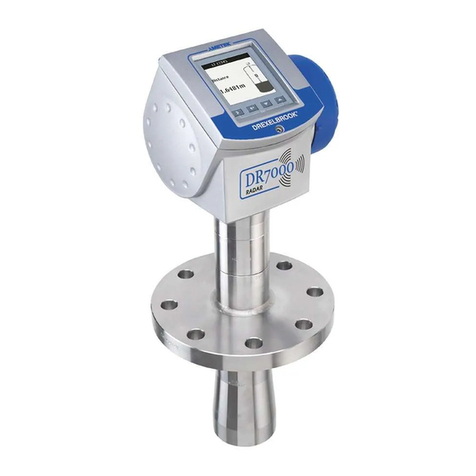
Ametek Drexelbrook
Ametek Drexelbrook DR7000 Series Supplementary instructions
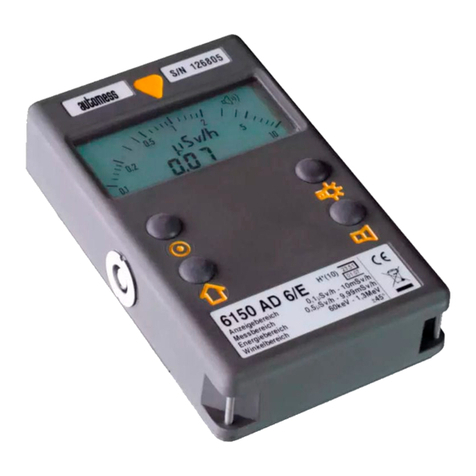
Automess
Automess 6150AD1 operating manual
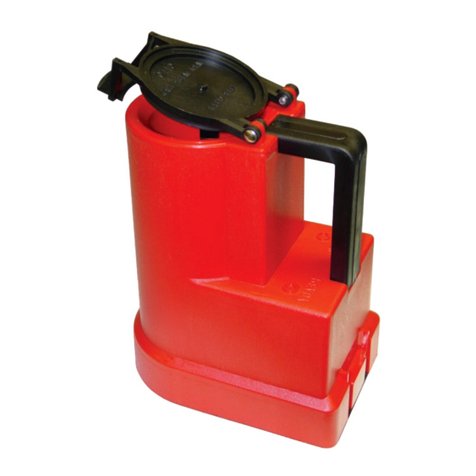
CITO
CITO THAW AI-CT-MAN-F instruction manual
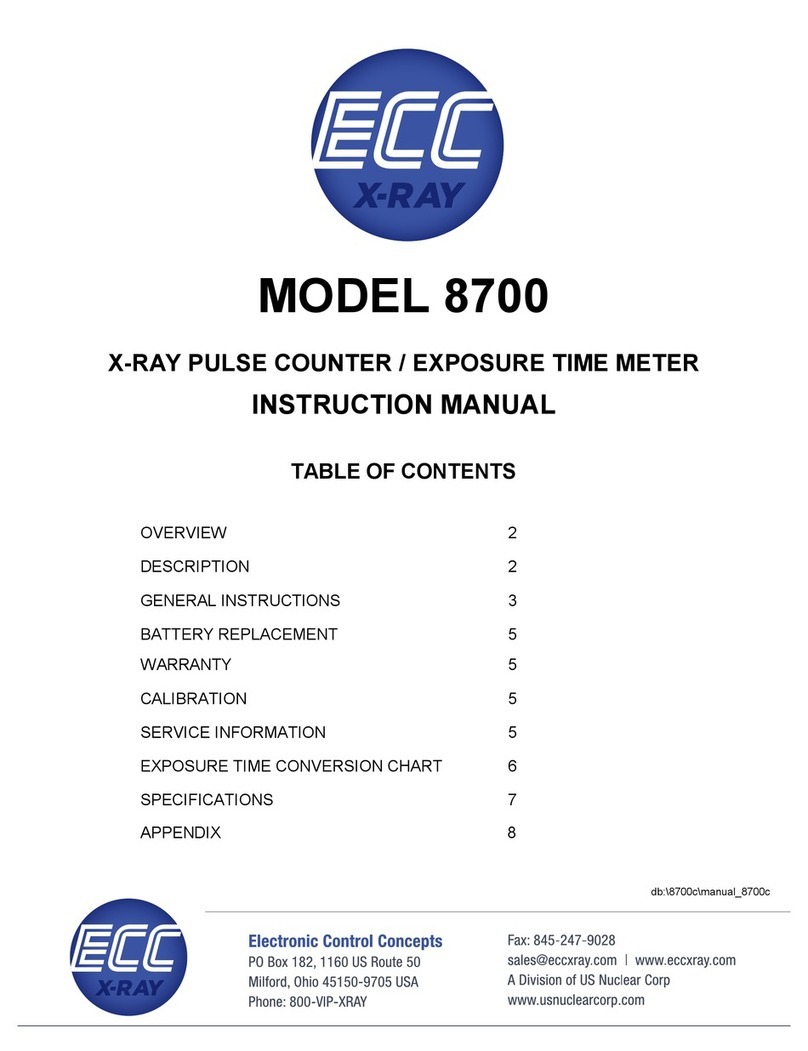
Electronic Control Concepts
Electronic Control Concepts 8700 instruction manual
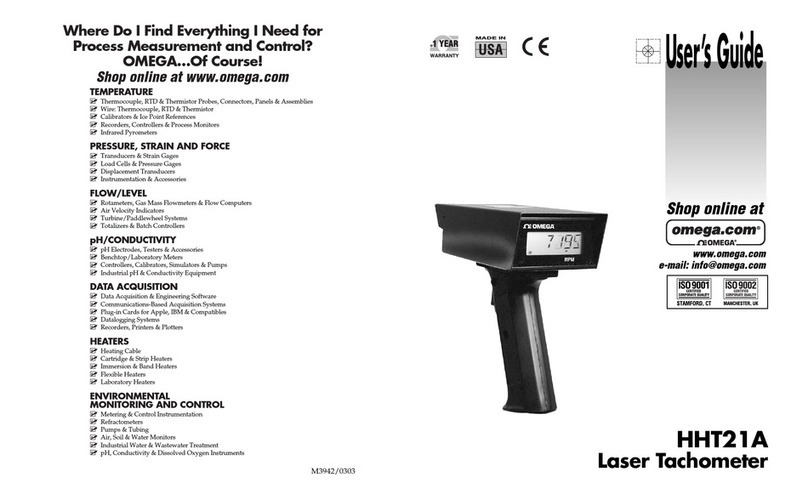
Omega
Omega HHT21A user guide
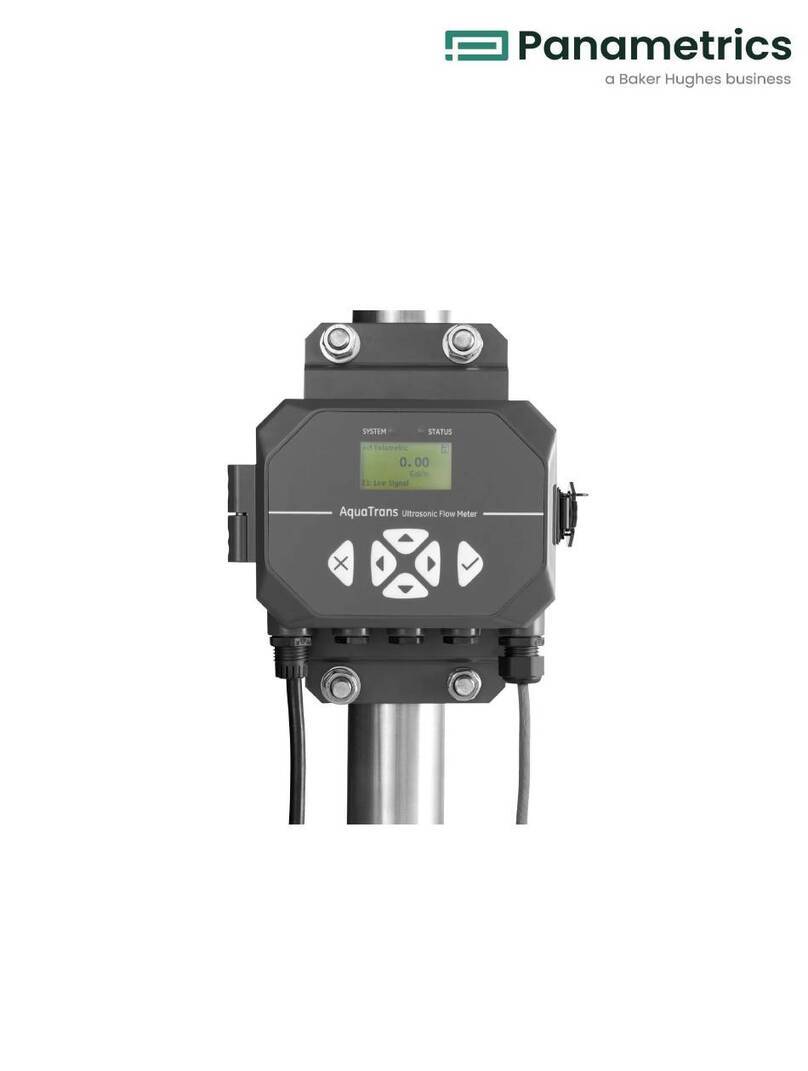
Baker Hughes
Baker Hughes Panametrics AquaTrans AT600 user manual
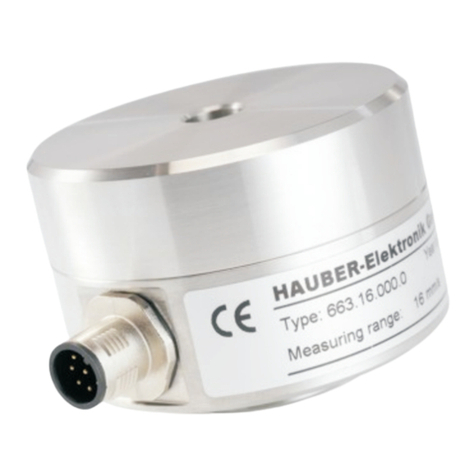
Hauber
Hauber 663-Window operating instructions
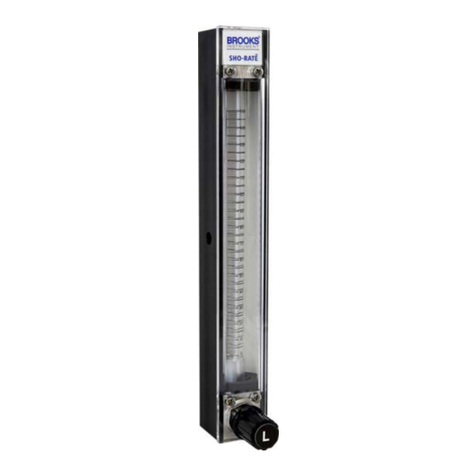
Brooks Instrument
Brooks Instrument Sho-Rate Series Installation & operation manual
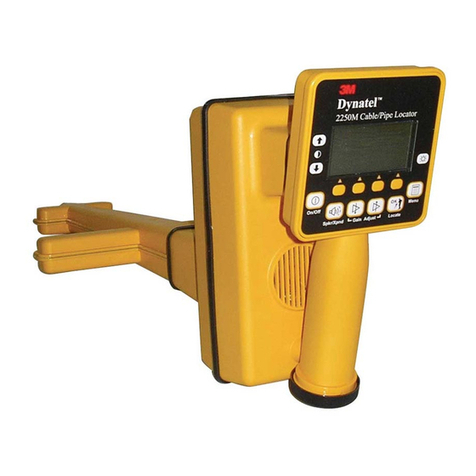
3M
3M Dynatel 2250M Operator's manual
Onicon
Onicon System-10 BTU Meter Installation and operation guide
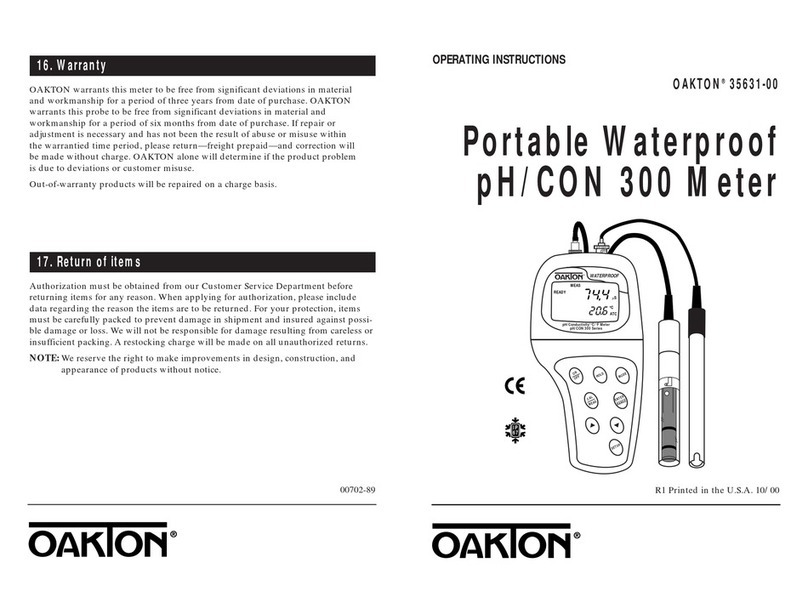
Oakton
Oakton 35631-00 operating instructions
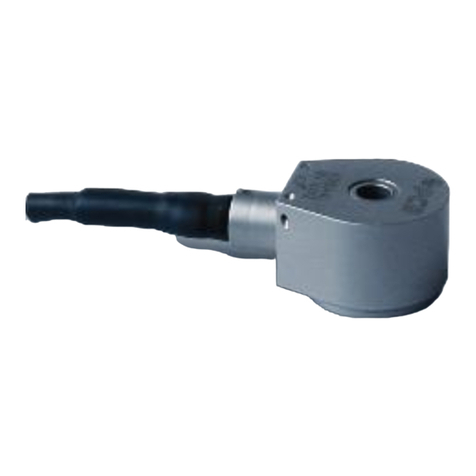
PCB Piezotronics
PCB Piezotronics 355A40 Installation and operating manual
